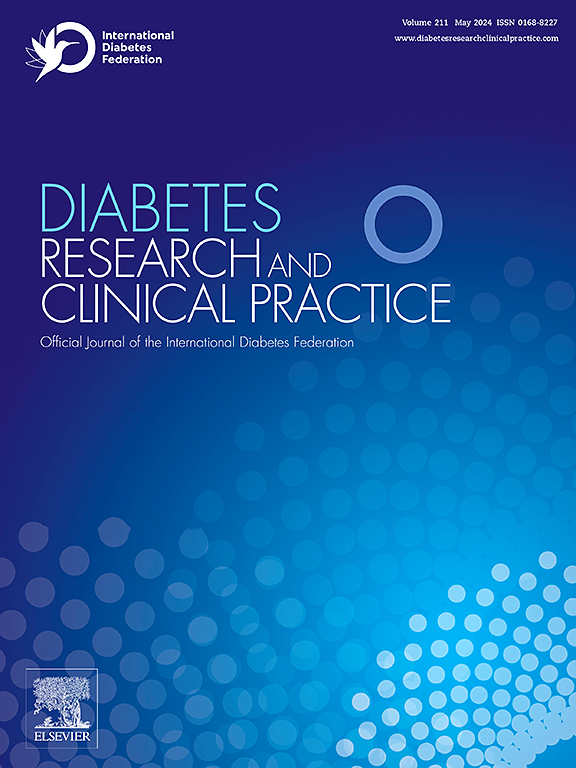Early screening and diagnosis of gestational diabetes mellitus (GDM) and its impact on perinatal outcomes
IF 7.4
3区 医学
Q1 ENDOCRINOLOGY & METABOLISM
引用次数: 0
Abstract
Aims
To compare the maternal and neonatal outcomes following early diagnosis compared with routine diagnosis of gestational diabetes (GDM).
Methods
In this observational study, 3494 women were categorised by weeks of gestation at GDM diagnosis: early GDM (≤20 weeks) and routine GDM (>20 weeks). The early GDM group was further divided by treatment commencement as immediate (<12 weeks) and delayed (12–20 weeks) and by diagnostic fasting blood glucose as higher-FBG (5.3–6.0 mmol/L) and lower-FBG group (FBG 5.1–5.2 mmol/L). Primary outcomes were large for gestational age (LGA) and small for gestational age (SGA). Generalized linear models used to calculate risk ratios and adjusted for confounding.
Results
Risk ratios (RR) for LGA and SGA were similar for early versus routine diagnosis, and immediate versus delayed treatment. The higher-FBG immediate treatment group had a lower risk of newborn respiratory distress (RR 0.52, 95 %CI 0.34, 0.81) and emergency caesarean (RR 0.55, 95 %CI 0.34, 0.88) compared to the higher-FBG delayed treatment group. Among the lower-FBG group, no such benefits were seen.
Conclusions
Fasting glucose levels modified the effects of early treatment of GDM where a higher-FBG with immediate treatment appears to reduce perinatal complications, but treating women with lower-FBG early has no benefits.
妊娠糖尿病(GDM)的早期筛查和诊断及其对围产期结果的影响。
目的:比较妊娠期糖尿病(GDM)早期诊断与常规诊断的产妇和新生儿结局:在这项观察性研究中,3494 名妇女按确诊 GDM 时的妊娠周数分为:早期 GDM(≤20 周)和常规 GDM(>20 周)。早期 GDM 组又按治疗开始时间分为立即治疗组(结果:立即治疗组的风险比(RR)为 1:1):早期诊断与常规诊断、立即治疗与延迟治疗的 LGA 和 SGA 风险比(RR)相似。与 FBG 较高的延迟治疗组相比,FBG 较高的立即治疗组发生新生儿呼吸窘迫(RR 0.52,95 %CI 0.34,0.81)和紧急剖腹产(RR 0.55,95 %CI 0.34,0.88)的风险较低。结论:空腹血糖水平改变了 GDM 早期治疗的效果,FBG 较高并立即治疗似乎可减少围产期并发症,但早期治疗 FBG 较低的妇女则没有益处。
本文章由计算机程序翻译,如有差异,请以英文原文为准。
求助全文
约1分钟内获得全文
求助全文
来源期刊

Diabetes research and clinical practice
医学-内分泌学与代谢
CiteScore
10.30
自引率
3.90%
发文量
862
审稿时长
32 days
期刊介绍:
Diabetes Research and Clinical Practice is an international journal for health-care providers and clinically oriented researchers that publishes high-quality original research articles and expert reviews in diabetes and related areas. The role of the journal is to provide a venue for dissemination of knowledge and discussion of topics related to diabetes clinical research and patient care. Topics of focus include translational science, genetics, immunology, nutrition, psychosocial research, epidemiology, prevention, socio-economic research, complications, new treatments, technologies and therapy.
 求助内容:
求助内容: 应助结果提醒方式:
应助结果提醒方式:


